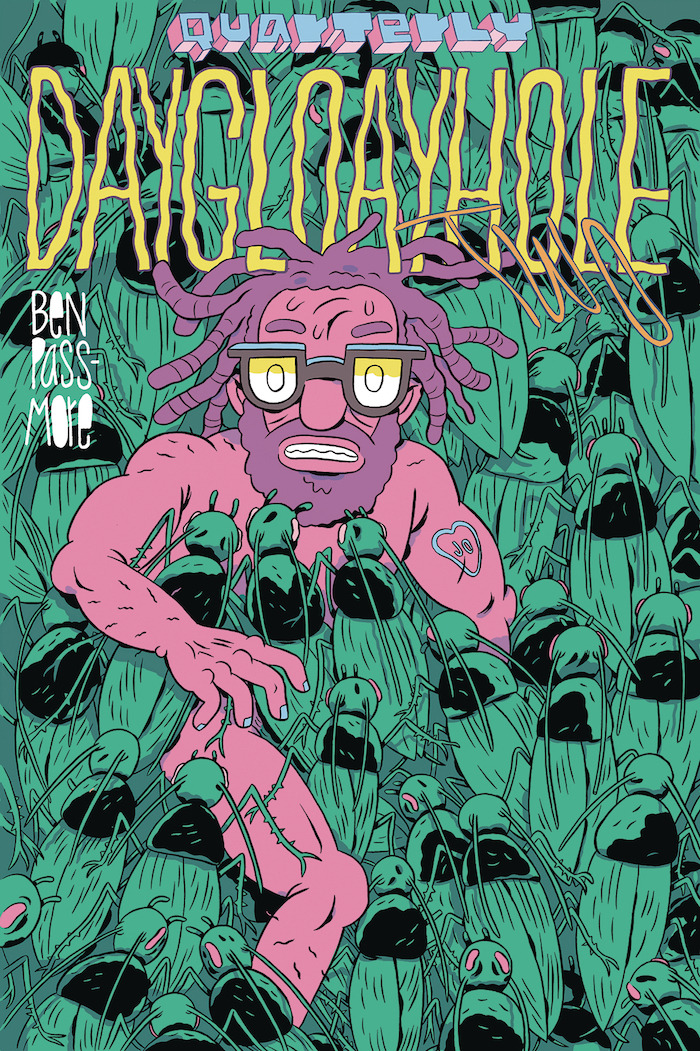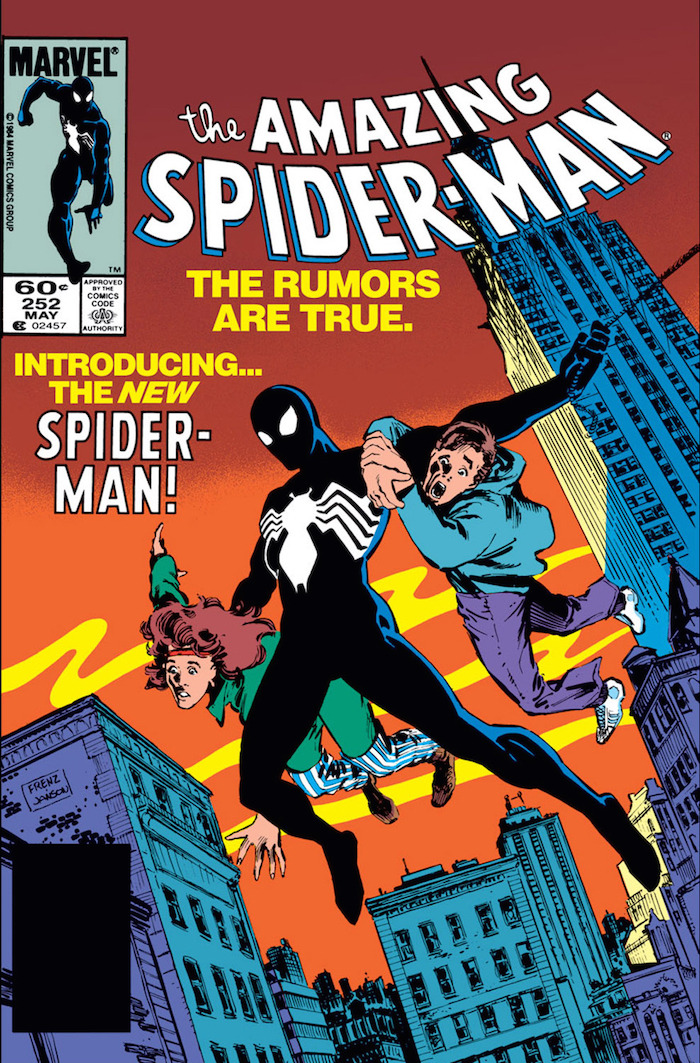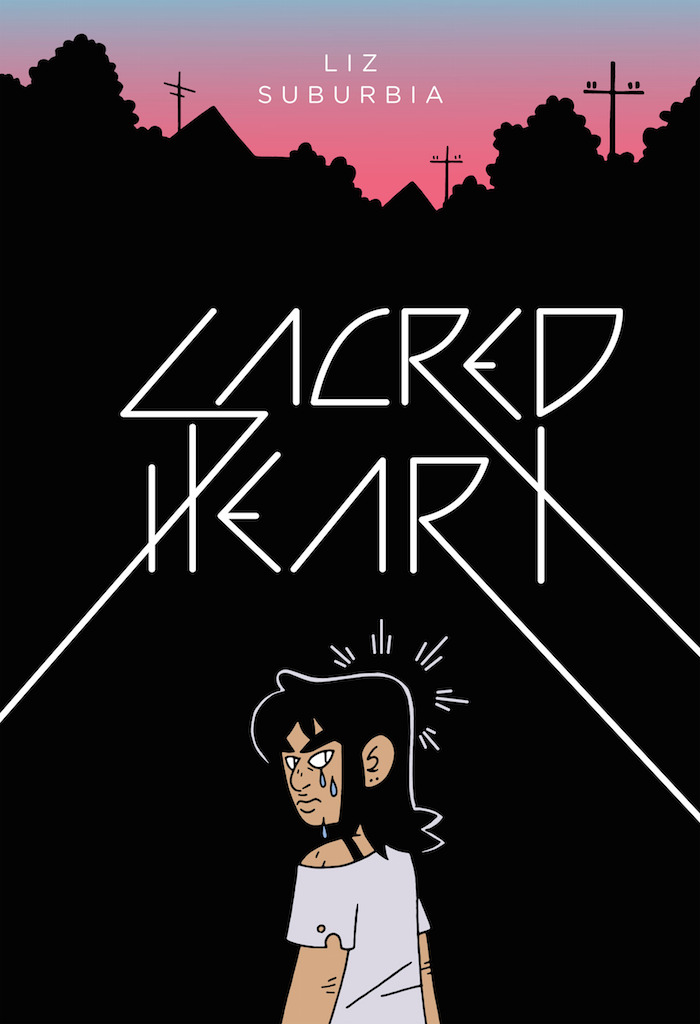Wild And Unsettling Comics You Should Read After Revisiting 'Fight Club'
(Welcome to Comic Book Drive-In, a series where comic and movie fans Jazmine Joyner and Rosie Knight recommend brand new, ongoing, and completed comic book series that tie into classic films and new releases.)
Welcome back to Comic Book Drive-In! Thanks for joining us on our journey through celluloid and sequential storytelling. In our third edition, we're revisiting one of the most misunderstood and misrepresented films in contemporary canon. David Fincher's Fight Club is a searing satire about toxic masculinity, violence, and capitalism. Based on Chuck Palahniuk's novel of the same name, the film still creates conversation to this day, and so we decided to look at three comics which complement, expand on, and even better the concepts and thematic threads that Fight Club explores.
New Comic: Daygloayhole #1
The Talent: Ben Passmore
What It's About: A surreal fever dream of a post-apocalypse story, Ben Passmore's stream of consciousness cartooning explores humanity, sanity, death, family, and sex in this vibrant technicolor debut which is unlike anything else we've read.
How It Connects to Fight Club: Fight Club is a story about masculinity and self, and in Daygloayhole, Passmore is living in his own head, facing a devastated Earth and a new and nonexistent world order.
Rosie: I'm a huge fan of Ben Passmore. All of his work is brilliant and vital, speaking to me on a level that I still don't really understand. The first issue of Daygloayhole is a fantastic piece of cartooning. It introduces us to a bleak and beautiful world that's utterly ravaged. At its core is Ben himself, battling his way through the wasteland as he tries to come to terms with his whole life and...himself. It's really, really good.
Jaz: I second Rosie. This book is really, really good. Reading Daygloayhole is like skimming the pages of Passmore's personal diary. As the main character, he traverses a desolate landscape and encounters bits of his past or parts of himself that he deems as a weakness. It's sprinkled with his politics and all depicted with fantastic art. I burned through this book like I have all of Passmore's other work. His ability to be so vulnerable and self-deprecating on the page is at times uncomfortable, but he also takes that awkwardness and flips it into something hilarious.
Rosie: Ben's art takes you on such a journey. The world that he creates is vibrant and full of life, even when the world we're journeying in is completely scorched. It's rare to find a book that's so fun, thoughtful, strange, and serious. Passmore walks the line perfectly and ends up creating something that's both playful and profound.
Jaz: I try to read as much of Ben's work as possible, as his insight is something rarely seen in comics and his voice is an important one. During you first glance at Daygloayhole, you see wild colors, weird monsters, murderous zombies, and a disheveled guy in a bathrobe wandering around this chaos. But with closer examination, you'll see that Passmore is taking the ultra-macho landscape of a post-apocalyptic world and using it to talk about his feelings, ultimately playing vulnerability off of the ultra-violent world around his character. I'll sound like a broken record in this week's column, but this is what Fight Club is: a commentary of masculinity wrapped in an ultra-violent wrapper to make it more palatable for the viewer/reader. Daygloayhole is more autobiographical than anything, but it's really interesting to see the parallels it holds to a film like Fight Club.
Ongoing Comic: The Amazing Spider-Man (The "Origin of Venom" Storyline)
The Talent: Todd McFarlane, David Michelinie
What It's About: The famed origin of one of the most iconic comic book villains of all time, this collection focuses on the mysterious black suit that gives Peter Parker strange new powers. It also deals with the duality of Spider-Man and the terrifying symbiote suit.
How It Connects to Fight Club: Fight Club is a film about duality and losing yourself, or at least losing the idea of who you are. Within the story of the symbiote suit is a plot that thematically ties in with Fight Club, as we watch Peter lose himself to a new seductive way of life, one that leads to violence and anger.
Rosie: This is one of the most iconic superhero stories and definitely one of the most famous ones centered around everyone's favorite webslinger. Spidey's black suit first debuted in Amazing Spider-Man #252, eventually leading to the creation of the beloved villain/anti-hero Venom. Todd McFarlane is a unbelievably distinctive artist, and there's something about his work that immediately throws me straight back to being a little kid picking up comics off the shelf at the newsagent next to my school. He's at his best in this book, with his Spider-Man design being one of my favorites, with huge eyes and shadowy webbing. McFarlane is the perfect artist for this story, which deals with the heretofore unseen dark side of Peter and the power of his alien suit.
Jaz: Like Rosie said, this story arc is iconic. Not only because of the introduction of Spidey's black suit, but to see the Queens hero struggle for the the first time with a dark side he's never had was wild, to say the least. Spider-Man always makes me think about my brother, who helped usher me into the world of comics with his love of Spider-Man. We would watch the movies and read the books, and we, like Rosie, were drawn to Todd McFarlane's incredible design of Spidey. In this story Peter is so worried that Mary Jane makes more money than him that he puts people's lives in danger in order to create a more profitable situation for himself. His toxic masculinity gets in the way of his work as Spider-Man, the beginning of a dark side creeping in. Seeing Peter fight this duality and try to have common sense is interesting to read. What he's going through is what Fight Club satirizes so well, how toxic masculinity can get out of control unchecked.
Rosie: I love that! I actually didn't immediately make that connection, but it's so true. Peter's own toxicity is what opens him up to the potential risk of the symbiote suit. It's why he is so easily sucked into the power it offers without ever really questioning "Where the hell did this machine come from and why did it cover me in black goo?"
Jaz: Exactly! He never once thinks about the origin of the suit. It's just "Well, I guess this is my outfit now" and he swings back into action never really questioning the implications of having a living costume he randomly acquired from a mystery machine. Very not cool, Parker! Also can we talk about those party outfits in issue #299? I loved Peter's '80s shoulder pads and MJ's gold high slit number. The art in this book is so outrageous and the outfits are perfection.
Rosie: The art is incredible. Todd in this period was a complete powerhouse and working with Michelinie, they crafted an incredible tale about duality, space aliens, power, and – of course because it's a Spider-Man story – responsibility. Also just a fun note, but the black suit was the first time since his inception that Spidey had ever changed costumes!
Finished Comic: Sacred Heart
The Talent: Liz Suburbia
What It's About: Liz Suburbia's sprawling exploration of adolescence is a unique experience. Sacred Heart is a graphic novel about a town of children abandoned by their parents. Ben and her peers are left to their own devices to try and make sense of what was left behind.
How It Connects to Fight Club:A story about lost children and misfits creating their own society melds well with the themes of Fight Club. We see the narrator as his entire life crumbles around him. He turns to Tyler and lives on the fringes of society, where he finds a new version of himself. Identity and self-discovery weave in and out of both of these stories.
Jaz: I found this book randomly one day and read it in one sitting. Suburbia does a wonderful job creating this ghost town run by kids and teenagers. The overlying mystery of why they were left on their own never hampers the core story of Ben and her peers trying to wait out their parent's pilgrimage. I love this story and it was so different from anything I had read at the time. Suburbia's talent at capturing, teenage angst, and the difficult transition to adulthood is something that pulled me in immediately. It made me wish I had something like this to read when I was a teenager.
Rosie: Completely this. Suburbia is a rare talent, and when Jaz recommended this book for our Fight Club issue, I was super excited. Reading Sacred Heart is a completely immersive experience, and I too read the book in one go. It's impossible to put down once you start. One of the things that really struck me was what an original setup she creates by giving us a familiar conflict: kids left alone in a devastated location. But she crafts a completely engrossing and original way to introduce it. Suburbia's art is incredibly streamlined and effective. Her linework is impactful and she creates a world that feels instantly recognizable but also completely unique. I was blown away by how powerful Sacred Heart is. There's definitely something universal in stories about teenagehood, and I really connected with this one. The isolation and creation of a new kind of society really reminded me of what Palahniuk and Fincher were attempting to explore in Fight Club, but Suburbia crafts something much affecting, haunting, and ultimately vital.
I really love the way that the kids in Sacred Heart are still half-stuck in the everyday mundanity that their parents left them in, even when there's absolutely no one there to enforce it. It's heartbreaking and relatable as we all know that structure and sameness is often the groundwork of stability, and when the parents leave in Sacred Heart the kids are left floundering, looking for a sense of normality. It's really reminiscent of the boys who try and find a leader in Tyler. In fact, it works as a great mirror because Fight Club is about escaping the American dream that society has sold you, where as much of what Sacred Heart's kids are holding onto are the parts of Americana that they shared with their parents.
Jaz: For real. The society Surburbia creates is like a reflection of what's going on inside of the teenagers. It's this lonely landscape dotted with minor glimmers of hope and joy. The artwork in this graphic novel benefits from its simplicity. There's something eerie and purposeful about the lack of color that pulls you into the story. I loved the line work and inking in this comic. As for the characters, I identified with Ben so much. As an older sister to a willful younger brother, I felt her struggle to protect her sister and give her the freedom Ben would want herself.
I thought it was so interesting that the kids tried to continue with their day-to-day lives, almost as if their parents could come home at any moment. I agree with Rosie's observation of the Sacred Heart kids trying to hold onto Americana while Fight Club is all about abandoning the American dream. Fight Club focuses on abandoning capitalist society's ideals, but Sacred Heart is these kids' desperate hope to go back to that normalcy, back to the lives they knew before.
***
You can find all of the comic books mentioned online or at your local comic book shop. Fight Club is available to purchase on Amazon, VUDU, and anywhere else you buy your movies.
You are now leaving the Comic Book Drive-In! Read safe, comic fans!



